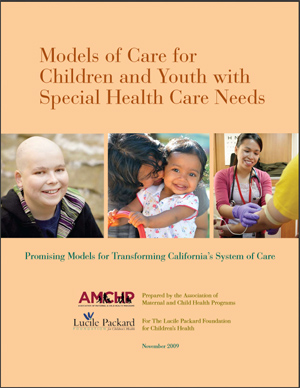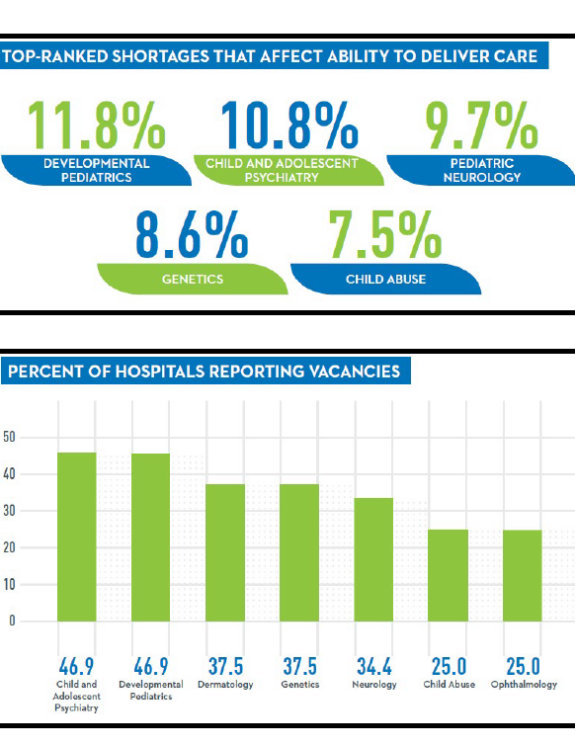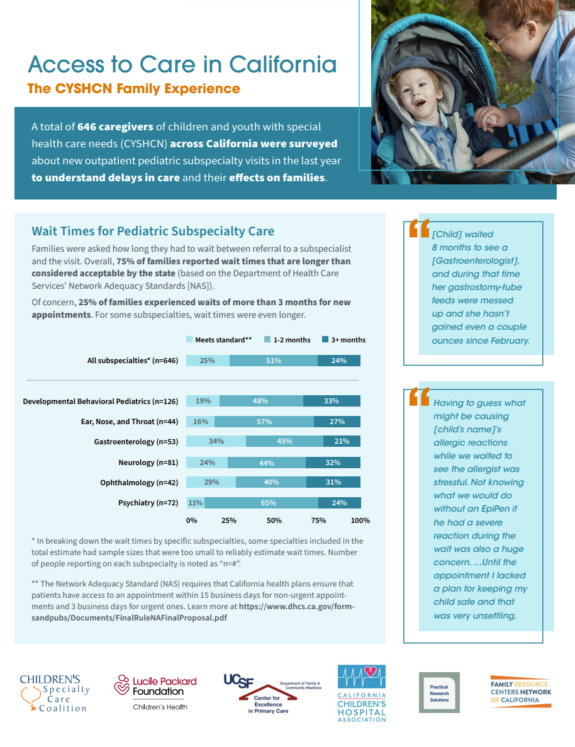Creating an effective system of care for children and youth with special health care needs (CYSHCN) is one of the most challenging and pressing roles for state health leaders. In the United States, 9.4 million children, or almost 13 percent, have special health care needs. A major challenge for families of CYSHCN is accessing an often-fragmented system of care. In many cases, specialty services are not coordinated with primary care or other community-based services, and coverage for services is not comprehensive. Furthermore, the current economic downturn is placing unprecedented stress on state budgets across the nation, threatening programs supporting the needs of CYSHCN and further exacerbating gaps in services.
While each state’s ability to meet the needs of CYSHCN is affected by numerous factors, such as its size, health care structure, economic strength and political climate, California faces particularly tough challenges in creating a system of care. The sheer size of California as the nation’s most populous state, its economic and cultural diversity, as well as the particularly acute budget crisis pose added pressures to ensuring optimal health and well-being for CYSHCN in the state. Because of the uncertain environment caused by the national health reform debate and major cuts to California’s health programs, it is challenging to determine which models could be most successful in California at the present time. Even with major health reform, CYSHCN and their families may still face difficulties of under insurance, coordination of care, access to a medical home, and transition.
The goal of this report is to provide a range of models of care for CYSHCN that the Lucile Packard Foundation for Children’s Health can review and discuss as a starting point for mapping out a strategy to transform the system of care. These models were collected primarily from states with similar sociodemographic, geographic, and structural characteristics as California. Key criteria for model selection were programs that demonstrated innovation, some type of evaluation and/or results, as well as a sustainable funding stream.
Key Recommendations
While experts had a number of specific recommendations, particularly in the area of medical homes for CYSHCN, a key overall recommendation repeatedly shared was the need for the Foundation to plan and conduct its initiative in a coordinated manner that can benefit the entire state. Respondents recognized the challenge of California’s size and population but felt strongly that even if an initiative was originally piloted in a county or at the regional level, it had to be a piece of a coordinated effort to improve care across the state.
In addition, experts encouraged the Foundation to consider the unmet mental health needs of the children as a whole and CYSHCN, in particular, when designing new initiatives. Investing in strong and coordinated partnerships with Title V, pediatricians, family physicians, and family organizations to help plan and grow programs, and help provide the political capital to sustain promising programs is also essential. As the Foundation expands its work in CYSHCN, it will be critical to engage families in the planning and implementation of this work. Lastly, experts pointed out that California has some promising models that can be expanded, and that this effort should also build on them.



